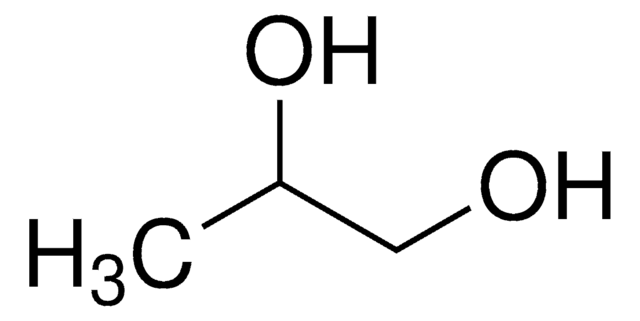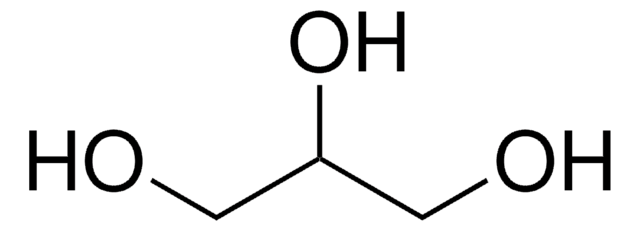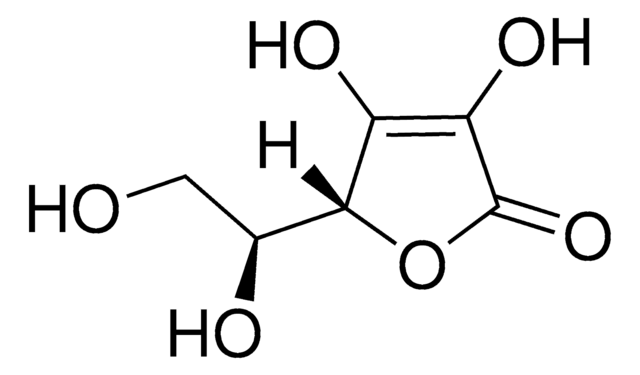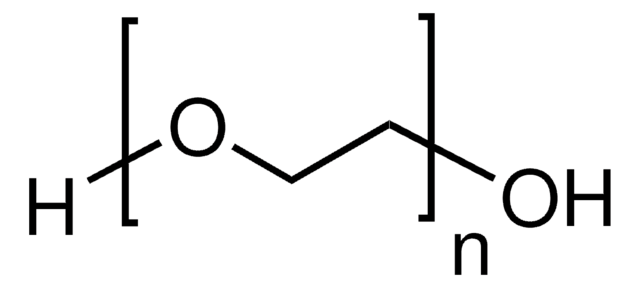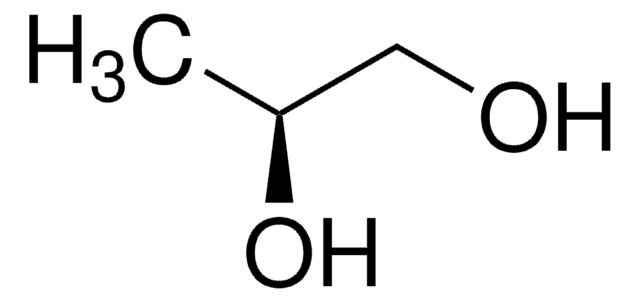16033
1,2-Propanediol
meets analytical specification of Ph. Eur., BP, USP, ≥99.5%
Synonym(s):
1,2-PDO, Propylene glycol
About This Item
Recommended Products
vapor density
2.62 (vs air)
Quality Level
vapor pressure
0.08 mmHg ( 20 °C)
assay
≥99.5%
form
liquid
autoignition temp.
779 °F
quality
meets analytical specification of Ph. Eur., BP, USP
shelf life
24 mo.
expl. lim.
12.5 %
impurities
acidic reac. impurities, complies
organic volatile impurities, complies (GC)
oxidizing substances, complies
reducing matter, complies
residual solvents, complies
≤0.0005% heavy metals (as Pb)
≤0.002% free alkali (as NaOH)
≤0.003% free acid (as CH3COOH)
≤0.2% water (Karl Fischer)
ign. residue
≤0.005% (as SO4)
refractive index
n20/D 1.431-1.433
n20/D 1.432 (lit.)
bp
187 °C (lit.)
mp
−60 °C (lit.)
density
1.036 g/mL at 25 °C (lit.)
anion traces
chloride (Cl-): ≤50 mg/kg
sulfate (SO42-): ≤50 mg/kg
suitability
complies for appearance of solution
SMILES string
CC(O)CO
InChI
1S/C3H8O2/c1-3(5)2-4/h3-5H,2H2,1H3
InChI key
DNIAPMSPPWPWGF-UHFFFAOYSA-N
Looking for similar products? Visit Product Comparison Guide
Related Categories
General description
Application
Packaging
Other Notes
The article number 16033-6X1L will be discontinued. Please order the single bottle 16033-1L which is physically identical with the same exact specifications.
The article number 16303-4X2.5L-R will be discontinued. Please order the single bottle 16303-2.5L-R which is physically identical with the same exact specifications.
Storage Class
10 - Combustible liquids
wgk_germany
WGK 1
flash_point_f
219.2 °F - closed cup
flash_point_c
104 °C - closed cup
ppe
Eyeshields, Gloves
Choose from one of the most recent versions:
Already Own This Product?
Find documentation for the products that you have recently purchased in the Document Library.
Customers Also Viewed
Chromatograms
suitable for GCsuitable for GCOur team of scientists has experience in all areas of research including Life Science, Material Science, Chemical Synthesis, Chromatography, Analytical and many others.
Contact Technical Service